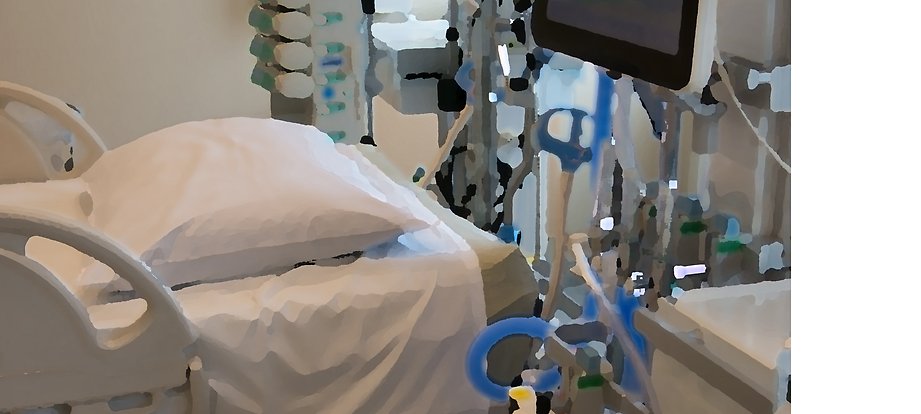Sepsis

Photo and image editing: Miklós Lipcsey
The liver's immune barrier function in experimental septic shock
Septic shock is commonly called blood poisoning. In this condition bacteria, fungi or viruses enter the bloodstream and cause an infection with major impact on the body, including inflammation, disturbed blood circulation, blood and tissue oxygenation and decreased level of consciousness. Septic shock is commonly seen in intensive care, and is associated with high mortality and is associated with high health care costs. Although septic shock may occur suddenly in previously healthy people, it is more common in people with multiple illnesses and underlying infections.
According to estimates, the intestines contain 1-2 kg of microbes. These potentially dangerous microorganisms are isolated from the circulation, where they could induce sepsis, through various barrier systems and the immune system. One of the mechanisms is probably that the circulation from the intestines passes the liver containing the body's largest amount of cells of the innate immune system through the mononuclear phagocytic system (MPS). Our hypothesis is that the MPS works less efficient in systemic inflammation as in blood poisoning, allowing microbes or their fragments to reach systemic circulation with activation / maintenance of the systemic inflammatory response. In an experimental model of blood poisoning, we investigate whether MPS function in systemic inflammation is actually depressed, and what parts of MPS are affected and also if there are pharmacological methods to affect the impaired function in MPS.
Members of the group 2024
Miklós Lipcsey, Principal Investigator, Professor, Hedenstierna Laboratory, Anaesthesiology and Intensive Care, Department of Surgical Sciences
Katja Hanslin, PhD Student, Anaesthesiology and Intensive Care, Department of Surgical Sciences
Anders Larsson, Professor, Clinical Chemistry, Department of Medical Sciences
Jan Sjölin, Professor, Infectious Diseases, Department of Medical Sciences
Intensive care epidemiology
Patients in intensive care units have reversible failure in one or more organ systems. They also often have a several other chronic illnesses. Considering that intensive care is demanding for patients, and generates high costs for society, it is important that outcomes for patients are followed up after intensive care. One way to do this is through the Swedish Intensive Care Register that collects data from all general intensive care units in Sweden. Another way is to use the Merged Anesthesia and Intensive Care Cohort in Sweden (MAICS) cohort with 108,000 genotyped patients. The project investigates disease mechanisms, prognosis models, mortality, complications and quality of life after critical illness, sepsis, COVID-19. We use both population epidemiological and genetic epidemiological methods.
Members of the group 2024
Miklós Lipcsey, Professor
Michael Hultström, Associate Professor
Rolf Gedeborg, Associate Professor
Robert Frithiof, Associate Professor
Björn Ahlström, PhD
Ing-Marie Larsson, PhD
Gunnar Strandberg, PhDx
Karl Stattin, PhD
Anna Aronsson, PhD Student
Rasmus Mossberg, PhD Student
Peter Halvorsen, PhD Student
All above are affiliated to Anaesthesiology and Intensive Care, Department of Surgical Sciences.
Blood antibiotic concentrations in intensive care patients
The outcome of patients with severe infections is determined by whether correct antibiotics are administered quickly and in the correct dose. The effect of the right antibiotics at the right dose should be greatest during the first day, as the bacterial burden is greatest then. The knowledge about the pharmacokinetics of antibiotics is based on studies with healthy volunteers. Antibiotic concentration in the blood of critically ill patients is the first day is unknown. In the ACCIS study, blood samples have been collected from patients in 7 intensive care units. In addition to descriptive studies, data will be used for pharmacological models for optimal antibiotic dosing and development of bedside measurement of blood antibiotic concentration.
Members of the group 2024
Miklós Lipcsey, Principal Investigator, Professor, Hedenstierna Laboratory, Anaesthesiology and Intensive Care, Department of Surgical Sciences
Anna-Karin Smekal, PhD student, Anaesthesiology and Intensive Care, Department of Surgical Sciences
Mia Furebring, PhD, Infectious Diseases, Department of Medical Sciences
Jan Sjölin, Professor, Infectious Diseases, Department of Medical Sciences
Samarbetsparter
Ta bort denna layout + textmodul om stycket inte behövs.
